Federal Circuit to Reconsider 15-Year Claim Construction Position: Patent Holders and Their Counsel on Watch
April 8, 2013
Hamilton Brook Smith Reynolds Alert
- Claim construction (i.e., the determination of the meaning and scope of claims) is a major part of patent infringement litigation proceedings and can make or break a party’s case.
- The Federal Circuit has granted a Petition to consider whether to overrule its position that claim construction is a matter of law, reviewable on appeal with no deference to the District Court.
- If the Federal Circuit overrules its position, there will likely be a change in the manner in which claim construction positions are presented and construed. Moreover, appellants would have a higher hurdle to overturn claim construction rulings on appeal.
- Patent owners and litigators wishing to enforce patents should prepare strategies for presenting claims to be construed as valid and sufficiently broad in scope regardless of the outcome of the Federal Circuit’s decision in this case.
- Parties litigating patent cases should be careful to preserve their claim construction arguments for appeal.
Recently, in the case of Lighting Ballast Control LLC v. Philips Elecs. N. Am. Corp., the Court of Appeals for the Federal Circuit granted a Petition for rehearing en banc on an essential area of patent law, namely, claim construction. In the Order granting the Petition, the Federal Circuit has agreed to hear the decision en banc, meaning before the entire Court, rather than the usual three judge panel. It has requested that the parties specifically address the following issues:
- Whether the Court should overrule its 15-year old ruling in Cybor Corp. v. FAS Technologies, Inc. (“Cybor”), where it was determined that claim construction is a matter of law which must be reviewed de novo on appeal (i.e., with no deference to the District Court).
- Whether the Court should afford deference to any aspect of a District Court’s claim construction, and, if so, which aspects should be afforded deference.
The Petition for rehearing en banc stated that this case is particularly apt to overturn Cybor because it is both routine and exceptional. It is routine because the Federal Circuit merely performed its standard practice of reviewing a trial court’s claim construction without deference. In fact, the petitioners state that the Federal Circuit has cited Cybor in over 750 cases. Yet, it is also exceptional, because both the issues at hand and the District Court’s fact findings in the course of construing the claims make this is an exceptionally good case to revisit and overrule Cybor.
Lighting Ballast Control Case Provides the Means to Reconsider Claim Construction
The patentee, Lighting Ballast Control, sued the defendants in District Court for infringement of its patent, which relates to a damage resistant ballast for fluorescent lighting. A ballast regulates electrical current flowing through a lamp. One of the defendants, Universal Lighting Technologies, Inc. (“ULT”), asserted that the relevant claims are invalid on the grounds that they are indefinite “means-plus-function” claims. A means-plus-function limitation allows a patent applicant to claim an element as a “means” for performing a function, provided the specification discloses a structure capable of performing that function. ULT stated that the specification failed to disclose the necessary structure for the claim term “voltage source means.” Citing testimony from an expert witness and the inventor, the District Court found that means-plus-function claiming does not apply, and that the claims are valid because one of ordinary skill in the art would understand the structure for the claimed element. Following a jury verdict, the District Court entered final judgment that the claims were valid and infringed.
On appeal, citing Cybor, the Federal Circuit stated that determining whether a claim limitation invokes means-plus-function claiming is a matter of claim construction and, therefore, a question of law to be reviewed without deference. Because it found that means-plus-function claiming does apply and that there was no required structure in the specification, the Court held that the claims are invalid for indefiniteness, reversing the judgment of the District Court. In reaching this decision, the Federal Circuit rejected the expert testimony that was found credible and persuasive by the District Court.
The patentee petitioned for rehearing en banc, stating that Cybor should be overruled. Specifically, the patentee argued that claim construction should be viewed as a mixed question of law and fact, and a deferential standard should be applied in reviewing the District Court’s fact-finding incident to claim construction. According to the patentee, the proper standard of review is whether the decision is clearly erroneous; in other words, whether the District Court’s view of the evidence is not plausible. The patentee stated that, under this more deferential standard, the District Court’s judgment of validity and infringement would have been affirmed. The patentee also argued that if claim construction is not merely a question of law, ULT would have been found to have waived its means-plus-function argument by not maintaining it throughout the District Court trial and, thus, would not have been able to assert that argument on appeal.
In the Federal Circuit’s Order granting the Petition for rehearing, the appeal was reinstated. Oral argument proceedings will be set after the parties have presented briefs on the issues. In addition to the parties’ briefs, the Federal Circuit has also invited the views of the United States Patent and Trademark Office as amicus curiae, and has noted that other briefs of amici curiae will be entertained as well. It is expected that a number of such briefs will be filed due to the significance of the issue.
The Business Implications
The present reversal rate on appeal for claim construction is significantly higher than for many other appeal issues. If the standard for review becomes more deferential to the lower court’s construction, the reversal rate on appeal would likely drop, possibly significantly. Although that potential trend would increase certainty, it could also mean that fewer errors are corrected on appeal. Anyone anticipating patent litigation or currently involved in a patent litigation proceeding should keep close watch on the decision emanating from the Court in this matter. Until a decision is reached in this case, patent holders wishing to enforce their patent should prepare strategies for presenting claims to be construed as valid and sufficiently broad in scope regardless of whether claim construction continues to be viewed as a matter of law. Parties litigating cases should be careful to preserve their claim construction arguments for appeal.
To learn more about patent infringement litigation and claim construction, contact Deirdre Sanders or your regular practitioner at Hamilton Brook Smith Reynolds.




